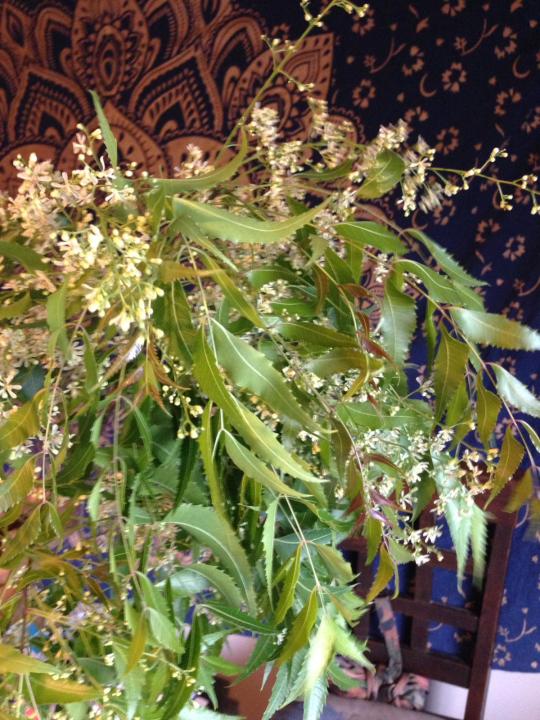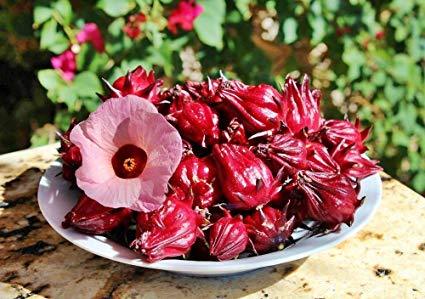Video
To have faith is to trust yourself to the water. When you swim you don’t grab hold of the water, because if you do you will sink and drown. Instead you relax, and float.” – Alan Watts👏 #caymanian #allanwatts #fire #earth #nature #natureprovides https://www.instagram.com/p/B-b2RVOpxWilUib83vyu1UDxIUA8Wp9Z82wMOQ0/?igshid=19kmh00kwfiqf
0 notes
Text
Azadirachta indica (Neem) Healing Entertainment
Azadirachta indica, commonly known as neem, nimtree or Indian lilac, is a tree in the mahogany family Meliaceae. It is one of two species in the genus.
Products made from neem trees have been used in India for over two millennia for their medicinal properties. Neem products are believed by Siddha and Ayurvedic practitioners to be anthelmintic, antifungal, antidiabetic, antibacterial, contraceptive, and sedative. It is considered a major component in siddha medicine and Ayurvedic and Unani medicine and is particularly prescribed for skin diseases. Neem oil is also used for healthy hair, to improve liver function, detoxify the blood, and balance blood sugar levels. Neem leaves have also been used to treat skin diseases like eczema, psoriasis.
Neem elaborates a vast array of biologically active compounds that are chemically diverse and structurally complex. More than 140 compounds have been isolated from different parts of neem. All parts of the neem tree- leaves, flowers, seeds, fruits, roots and bark have been used traditionally for the treatment of inflammation, infections, fever, skin diseases and dental disorders. The medicinal utilities have been described especially for neem leaf. Neem leaf and its constituents have been demonstrated to exhibit immunomodulatory, anti-inflammatory, antihyperglycaemic, antiulcer, antimalarial, antifungal, antibacterial, antiviral, antioxidant, antimutagenic and anticarcinogenic properties.
Enteroviruses are a group of viruses that cause a number of infectious illnesses which are usually mild. However if they infect the central nervous system, they can cause serious illness. The two most common ones are echovirus and coxsackievirus, but there are several others.
Coxsackie B 1–4 viruses are typically the most severe and fatal neonatal diseases. Common symptoms can include myocarditis, meningoencephalitis, and hepatitis. Other less severe symptoms can include pneumonia, Gastrointestinal symptoms, pancreatitis, and seizures. Patients with Coxsackie B4 virus have seemed to have herpangina, tonsillitis, and pharyngitis.[6]
The antiviral and virucidal effect of methanolic extract fraction of leaves of neem (Azadirachta indica A. Juss) (NCL-11) was studied regarding its activity and possible mechanism of action against Coxsackie B group of viruses. NCL-11 inhibited plaque formation in 6 antigenic types of Coxsackie virus B at a concentration of 1000 micrograms/ml at 96 hrs. 'in vitro'. Additionally virus inactivation, yield reduction and effect of time of addition assays suggested that NCL-11 was most effective against coxsackie virus B-4 as a virucidal agent besides interfering at an early event of its replicative cycle.
Insufficient research has been done to assess the purported benefits of neem, however. In adults, short-term use of neem is safe, while long-term use may harm the kidneys or liver; in small children, neem oil is toxic and can lead to death. Neem may also cause miscarriages, infertility, and low blood sugar.

#https://en.wikipedia.org/wiki/Azadirachta_indica#https://www.ecdc.europa.eu/en/severe-acute-respiratory-syndrome?type%5B0%5D=1244&sort_by=field_ct_publication_date_value&items_per_page=4&pa#https://en.wikipedia.org/wiki/Coxsackie_B4_virus#https://europepmc.org/article/med/10810594#https://www.ingentaconnect.com/content/ben/cmcaca/2005/00000005/00000002/art00006
0 notes
Text
Hibiscus Sabdariffa
Hibiscus tea is a herbal tea made as an infusion from crimson or deep magenta-colored calyces (sepals) of the roselle (Hibiscus sabdariffa) flower. It is consumed both hot and cold. It has a tart, cranberry-like flavor.
Hibiscus sabdariffa is a medicinal plant that is consumed for its health benefits, juice/concoction prepared from the plant is taken as a preventive/curative measures against diabetes and hypertension. The antihypertensive and other pharmacological properties such as antibacterial, anti-oxidant, nephro- and hepato-protective, renal/diuretic effect, anti-cholesterol, and anti-diabetic effects of Hibiscus sabdariffa have been demonstrated in several studies. Constituents of different plant parts of Hibiscus sabdariffa include phenolic acids, organic acid, flavonoids and anthocyanins which may contribute to the pharmacological effects of the plant. Hibiscus sabdariffa is relatively safe as LD50 of its extract in rats was found to be above 5000 mg/kg. Therefore, Hibiscus sabdariffa because of its pharmacological and nutritional benefits could be exploited in the management of various pathological conditions such as cardiovascular disease, cancer, neurological disorders and diabetes.
Hydroxycitric acid (HCA) is a derivative of citric acid that is found in a variety of tropical plants including Garcinia cambogia and Hibiscus subdariffa.
Anticancer effect In vitro studies have shown that Hibiscus sabdariffa extracts can induce apoptosis in cancer cells. Hibiscus polyphenol-rich extracts (HPE) induce cell death in human gastric carcinoma (AGS) in a concentration-dependent manner (Lin et al., 2005; Lin et al., 2007), this effect of HPE on AGS cells was mediated via p53 signalling and p38 MAPK/FasL cascade pathway (Lin et al, 2005). Also, Hibiscus anthocyanins extract (a group of natural pigments existing in the dried calyx of Hibiscus sabdariffa L.) caused cancer cell apoptosis, in HL-60 cells (Chang et al, 2005; Sowemimo et al., 2007), similarly Delphinidin 3-sambubioside (Dp3-Sam), isolated from the dried calices of Hibiscus sabdariffa L. induce apoptosis in human leukemia cells (HL-60) (Hou et al, 2005). Anticlastogenic effects of Hibiscus sabdariffa extract has been demonstrated against sodium arsenite-induced micronuclei formation in erythrocytesin mouse bone marrow (Adetutu et al., 2004). Various studies on Hibiscus protocatechuic acid has demonstrated its ability to inhibit the carcinogenic action of various chemicals in different tissues of the rat, including diethyl nitrosamine in the liver (Tanaka et al., 1993), 4-nitroquinoline-1-oxide in the oral cavity (Tanaka et al., 1994), azoxymethane in the colon (Kawamori et al., 1994), N-methyl-N-nitrosourea in glandular stomach tissue (Tanaka et al., 1995) and Nbutyl- N-(4-hydroxybutyl)nitrosamine in the bladder (Hirose et al., 1995). Tseng et al. (2000) also demonstrated that Hibiscus protocatechuic acid inhibits the survival of human promyelocytic HL-60 cells in a concentration- and time-dependent manner. The data presented by Tseng et al. (2000) suggest that the compound is an apoptosis inducer in human leukaemia cells and that RB phosphorylation and Bcl-2 protein may play a crucial role in the early stage.
Conclusion The information from in vitro and in-vivo studies shows a wide range of potentially new health applications and therapeutic targets for Hibiscus sabdariffa. Hibiscus sabdariffa is relatively safe and virtually non-toxic. Many pharmacological properties of H. sabdariffa may be attributed to the presence of a plethora of phytochemicals in the plant. The potent antioxidant activity of Hibiscus sabdariffa may be linked to the presence different antioxidants compounds with differing sites and mechanisms of action which may act alone or in concert with one another. Therefore, dietary supplementation of Hibiscus sabdariffa plant extract may be beneficial in reducing the risk of developing various pathological conditions such as cardiovascular disease, cancer, neurological disorders and diabetes.



1 note
·
View note